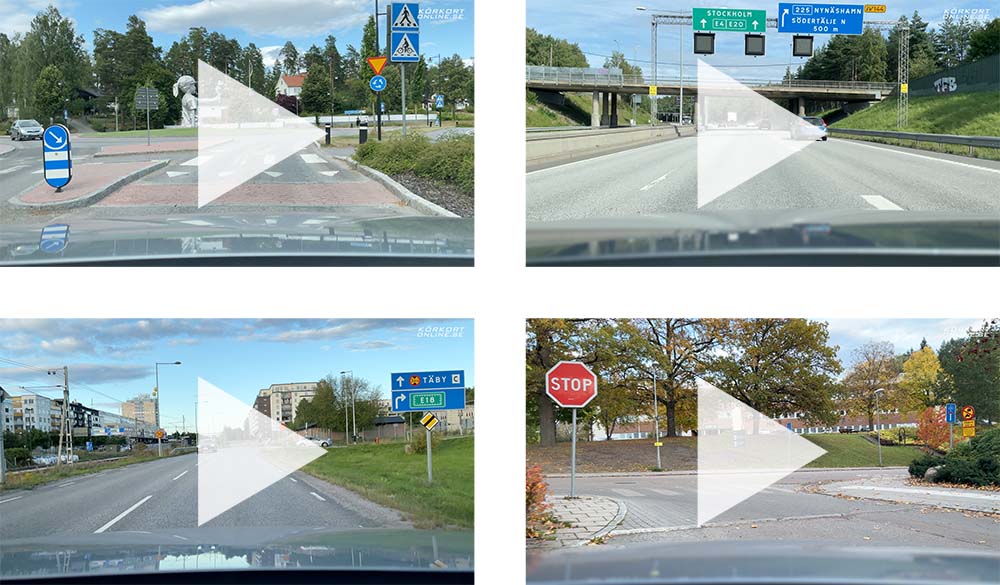Special streets and roads – driving licence theory
Built-up area (E5)

This sign should always be supplemented with a speed limit sign. If a prohibitory sign is displayed together with the sign, the prohibition will be applicable throughout the built-up area (up until the corresponding end sign).
The sign is usually displayed before a town, the name of which may be incorporated into the sign.
Home zone (E9)

An open place, similar to a public square, with several homes and businesses in the vicinity can be made into a home zone, in which drivers must adapt to the pedestrians. The following rules apply to a home zone:
- You may drive no faster than walking speed (around 7 km/h).
- Obligation to give way to pedestrians.
- No parking (permitted in allocated spaces).
- When you exit a home zone, you have an obligation to give way.
Pedestrian street (E7)

A pedestrian street has more limitations than a home zone. Only essential traffic is permitted, such as:
- Deliveries.
- Medical transports.
- To and from homes and hotels.
When you drive on a pedestrian street, the same rules apply as for a home zone. Note that, regardless of reason, you are always permitted to cross the pedestrian street, in the same way that you would, for example, cross a bicycle path.
Bicycle street (E33)

A bicycle street is designed for cyclists. You may drive a car on a bicycle street if you abide by the following rules:
- When you enter the bicycle street, you must give way to all traffic already on the bicycle street.
- Adapt your speed to the cyclists. You are never allowed to exceed 30 km/h.
- You are only allowed to park in designated parking spaces.
- When you exit the bicycle street, you have an obligation to give way.
Recommended lower speed (E11)

It is not appropriate to drive any faster than the speed indicated on the sign. The sign is usually displayed in conjunction with a speed bump.
Clarification on Recommended lower speed

What does “not appropriate” mean? Is it not illegal to drive any faster than the speed indicated on the sign?
– No, in that case, the sign displayed would be Speed limit. If Recommended lower speed indicated a prohibition, then what would be the difference between the two signs? There would be no difference, which is unreasonable (why would there be two signs with the same significance?)
If I am driving on a road where the speed limit is 50 km/h and see Recommended lower speed 30 km/h. Does this mean I am permitted to drive at 45 km/h?
– Yes, if you deem it appropriate and safe. But you may not drive any faster than 50 km/h.
You may drive no faster than walking speed, even though there are no pedestrians nearby.
The street straight ahead is a pedestrian street. You may only enter if you have a valid reason.
Latest forum posts
- << Railway crossing
- Special streets ↑↑
- Winter & icy roads >>



